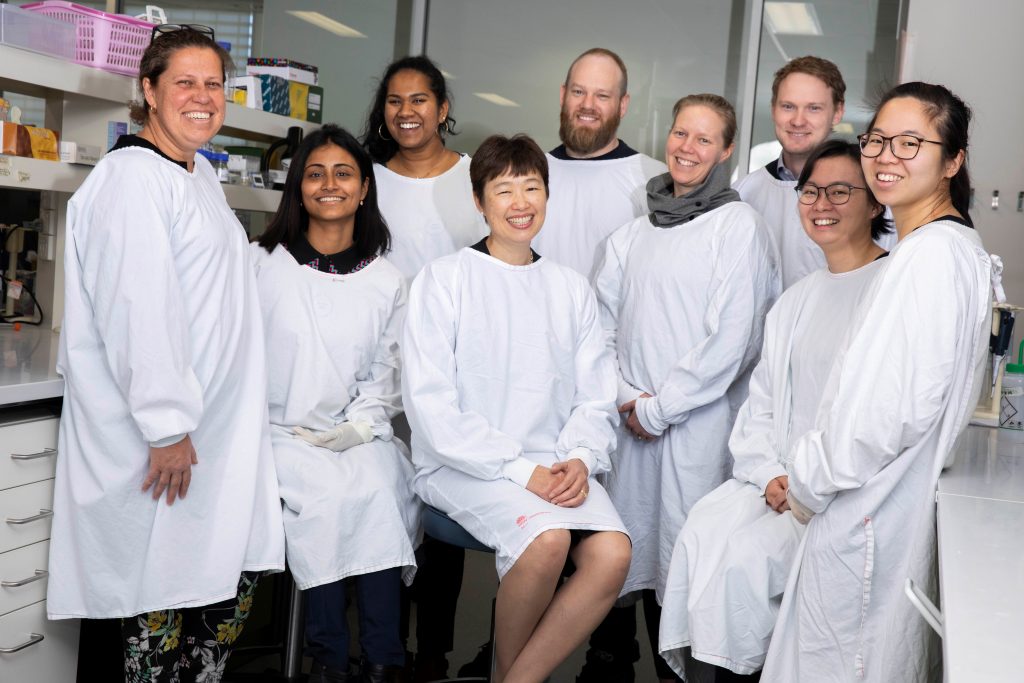How solving the mystery of the mitochondrial disease diagnosis is transforming lives
Imagine that for 40 years you sought a diagnosis for your serious health condition. You battled through, consulting eminent minds, to little avail – until, one day, your confounding medical story intersected with bold new technology and cutting-edge research. With a diagnosis, your lifelong mystery is solved, and you can finally start the treatment that improves your quality of life.
Or this: believing the gene mutation that causes your disease is passed down through the maternal line, you make the heartbreaking decision not to have a family. But that same bold new research provides a more nuanced and reassuring diagnosis, previously unavailable. Before the study results are even published, you are cradling your first-born in your arms.
That is the transformative power of new research into mitochondrial disease, supported by NSW Health through a Sydney Genomics Collaborative grant, awarded in 2015. According to the chief investigator Professor Carolyn Sue, the team’s discoveries about the potential of whole genome sequencing (WGS) in the diagnosis of mitochondrial disease are world-first, representing a major advance in the field.

Sue and the team have developed a simple blood test that supersedes previous invasive and inaccurate diagnostic methods. It’s simpler, cheaper, faster and safer, she declares, a clear translation of research discoveries into significantly better outcomes for patients whose disease has been difficult to diagnose.
‘I’ve spent the last 30 years trying to refine and perfect diagnostic methods, and so now I’m moving on to treatments, because this has now been answered,’ says Sue, executive director of the Kolling Institute and director of neurogenetics at the Royal North Shore Hospital.
Mitochondrial disease is complex and slippery, presenting a diagnostic dilemma. Known as the ‘powerhouse of the cell’, mitochondria are cell particles that fuel the body’s many essential chemical processes. But a gene mutation can cause chaos in those processes, causing a wide range of symptoms that make diagnosis difficult. Mitochondrial disease can affect any organ at any stage of life, with symptoms ranging from weight loss and low energy, to seizures, dementia, and death. Patients often live with the debilitating consequences, never knowing what is causing their illness.
The Kolling Institute’s research estimates that one person in 200-250 might have a gene mutation with potential to cause mitochondrial disease: one in 4 300 might develop a serious illness – a number that’s likely to be higher with more accurate diagnostics. The deceptive nature of the condition means that patients may even be receiving treatments for a mitochondrial disease they don’t have.
Methods of diagnosing disease have been far from ideal, Sue explains. A muscle biopsy – painful, invasive – is one possible indicator, usually of advanced disease. Routine genetic testing targets one particular mutation at a time, meaning patients must do test after test, often to no avail. ‘The diagnostic journey is so prolonged; it takes decades for some patients,’ Sue reflects.
But WGS is the breakthrough Sue has sought for most of her working life. The NSW Health grant, a collaborative partnership with Kolling Institute, Royal North Shore Hospital, Westmead Children’s Hospital and Garvan Institute, along with health economists a Macquarie University to establish cost benefit, enabled WGS for 400 samples from both child and adult patients.
The Garvan Institute sequenced all the DNA from two genomes: the nuclear DNA, found in every cell’s nucleus and inherited from both parents; and the mitochondrial DNA, inherited from the mother. Information from both types of DNA is needed for certainty and, while that has contributed to the difficulty of making clear diagnoses, it also means that WGS is the ideal diagnostic tool, because it can examine all the DNA at once.
‘Fast forward to the impact of WGS – we can do a single blood test and diagnose the patient,’ explains Sue. ‘We are now shifting from that old, insensitive, invasive traumatic method of diagnosing mitochondrial disease which only diagnosed about a tenth – if that – of patients and didn’t give you the information about how to treat them either.’
A simple blood test that makes a definitive diagnosis opens the field to an exciting range of developments to improve patients’ lives, such as precision treatments tailored to a patient’s condition. Some women will now know, definitively, that their disease is caused by a mutation in the nuclear DNA and that their children won’t be at higher risk than any other child. And, for women with a mutation in their mitochondrial DNA, cutting-edge IVF treatments using donor mitochondria will be possible so, finally, they might be able to have a family.
‘In so many ways, the value of the diagnosis here is key to the future possibilities,’ says Sue.
Updated 3 years ago